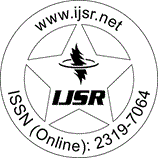Downloads: 4
India | Economics | Volume 14 Issue 10, October 2025 | Pages: 368 - 371
The Economics of Being Left Behind: Digital Literacy and Inequality in a Changing World
Abstract: The digital divide in India today is no longer just about access to devices or internet connectivity-it?s about survival, participation, and dignity in an increasingly digitized world. This article delves deep into how digital exclusion, especially among marginalized groups, is structurally embedded in social, economic, and educational inequalities. Rather than offering a generic summary, the research highlights how digital literacy-not as a static skillset, but as a living, evolving capability-has become indispensable for modern citizenship and economic resilience. What?s striking is the multi-layered nature of exclusion, shaped by gender, caste, geography, and class, where the digital world opens doors for some and solidifies walls for others. Drawing from robust secondary data across Indian and Global South contexts, the analysis moves beyond surface metrics to uncover how policy gaps, cultural barriers, and infrastructural inequities intersect to keep millions digitally alienated. This suggests that digital literacy is no longer a luxury or an add-on but a fundamental right-one that demands rethinking policy through an intersectional lens. The article makes a compelling case that unless digital literacy is fully woven into education, livelihoods, and public service systems, digital empowerment will remain symbolic, not transformative. It is evident that achieving true digital inclusion requires more than distributing technology; it calls for targeted, context-sensitive, and equity-driven interventions that prioritize capability, confidence, and community-led change.
Keywords: digital exclusion, digital literacy, socioeconomic inequality, rural India, intersectional policy
How to Cite?: Advay Jalan, "The Economics of Being Left Behind: Digital Literacy and Inequality in a Changing World", Volume 14 Issue 10, October 2025, International Journal of Science and Research (IJSR), Pages: 368-371, https://www.ijsr.net/getabstract.php?paperid=SR25908121358, DOI: https://dx.doi.org/10.21275/SR25908121358
